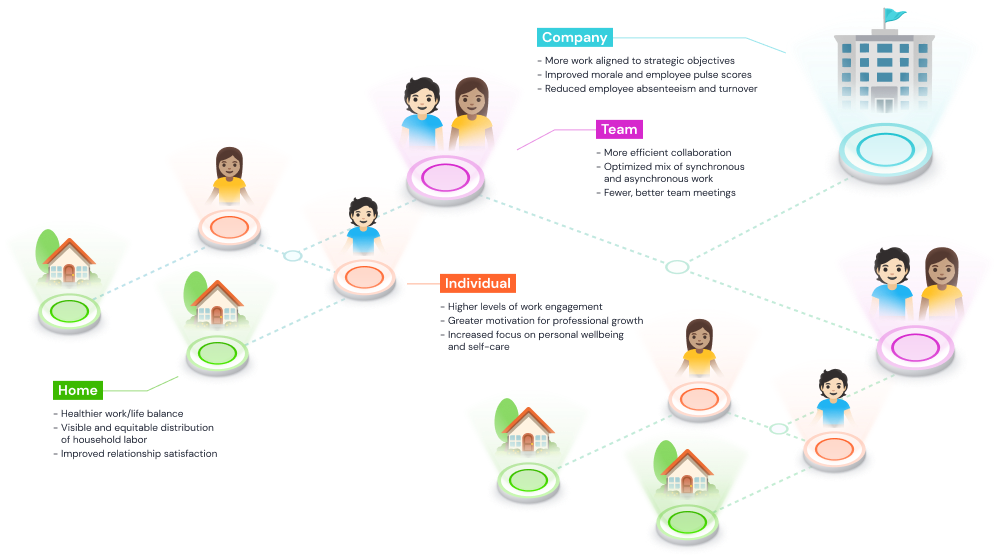
The Butterfly Effect 🦋of Adaptability & Resilience Skills
10 min
July 21, 2021

At BillionMinds, we have built our software from the ground up to help individuals become more personally effective. But as we work with organizations, we have realized that the culture of their organizations plays a HUGE role in how effective any individual can be. No matter how much we wish to empower our people, a massive part of how effective they are comes from the signals they are sent from their colleagues and leaders.
Here are five simple recommendations we make to organizations we work with that are serious about helping their employees be more effective.
In the workplace, we often think of readiness as a set of skills that are associated with a particular job. Managers get manager training, sales people get sales training and so on. These things are important of course, but ignore the fundamental people need to be effective. To try to resolve this, over the past few years, many organizations have turned to mindset training – designed to infuse characteristics such as Grit and Growth Mindset. These programs have their place, but they also have their limitations and challenges, which we will be looking at in a future blog post. What is missing in many organizations is practical skills training to help people be more effective, and particularly to optimize their day – to move from surviving to thriving in the reality of an unstructured, ambiguous workplace.
The core issue here is that our workplaces have changed massively in the last few decades, and our ability as humans to keep up should not just be assumed. We need to help our employees navigate that change, and provide the right education, support and accountability to do so. Personal effectiveness is something you can measure as you hire someone, but it’s also something you can build and maintain in your existing workforce.
In our opinion, work life balance is so 2010s. The very idea that you have a balance with work on one side and non-work on the other is kind of ludicrous when work and our non-work environments are basically merging together. Your employees ARE parents, partners, friends, and in some cases they have one or two other jobs in addition to yours. One of the most common refrains we hear in our research is that people are unable to optimize their work in the context of their broader life. If we can give people the tools to do that, they will show up more present at work, do better work, and be more committed to their employer as a result.
Of course employees have private lives, and many of them want to retain boundaries between their work life and their non-work life. Considering the whole person does not mean intruding on their privacy. Rather it means creating an environment which accepts the reality of work today, and allows employees to feel comfortable in their complicated messy lives.
Whether employees will rest adequately depends HUGELY on culture. On a day to day basis, if the CEO and executive team are seen to be working all hours, so will the vast majority of people in the company. This extends particularly to policies such as unlimited PTO, where in many cases people end up taking LESS time than they would with traditional policies.
At BillionMinds we emphasize something sports scientists have known for years – that rest is an essential foundation for continued execution. So we encourage organizations to stop thinking of PTO as an employee benefit, and rather as a benefit to the business, which helps reduce turnover, and increases engagement.
More broadly, every time a manager sends an e-mail out of hours, or lauds an employee for working weekends, they are subtly reducing the normal amount of rest in the company. So if you really want to change the norm, consider policies that strongly encourage rest – including more radical solutions such as cash bonuses for taking vacation, and 4 day work weeks. After all, the workplace has changed dramatically since working hours norms were established, and most of us work outside those hours anyway….
In many workplaces, we shifted from 9-5 to flextime, and more recently, completely flexible hours, where traditional work hours and meetings with others create a loose agreed upon expected time window when people work. This of course gives people more flexibility, but it also puts the onus almost completely on the employee to figure out how to be effective. In the absence of any structure or processes, all employees have as guidance is the culture of the organization.
Lack of structure can have a negative effect on mental health, so what can companies do to help employees have enough daily structure to be consistently effective?
One option that can encourage schedule brief morning standups and evening reviews in an attempt to create a natural start and end to the day. Another is to bring back break rooms, and encouraging leaders to regularly use them and at consistent times, so they model behaviors for employees to follow.
The goal here should not be to impose a structure and force everyone to conform, but rather to make it easier for people to create their own structure and repeatable method that is sustainable.
In an unstructured ambiguous world of work this last recommendation may be the most important. Perhaps the biggest single challenge with unstructured ambiguous work is understanding WHY we do what we do. Most companies shortcut this badly and just pass the responsibility down to managers.
As we work with organizations to improve personal effectiveness in employees, one of the most important steps is to train them on creating outcomes WITH their employees that both agree the employee is responsible for driving. This allows the employee to develop greater motivation for unstructured work, as they can clearly see WHY they are doing what they do, AND the confidence to push back when they are repeatedly asked to do work that is NOT connected to the business outcomes they are asked to drive. In the modern workplace there is always more work to do than can be done, and clear definition of outcomes helps ensure that the right work is prioritized.